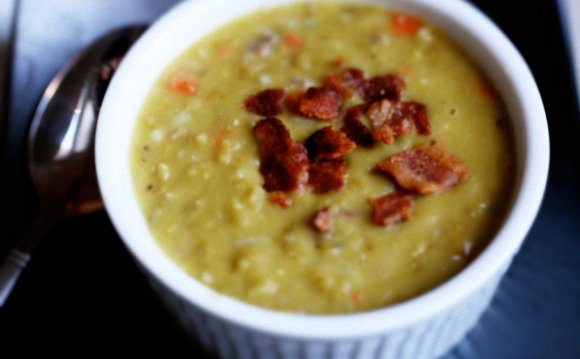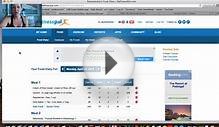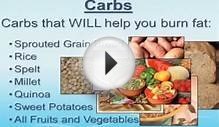
The 4-Hour Body (2010) is a bestselling tome by the author of The 4-Hour Workweek. It covers many aspects of improving your body, and one of them is diet, to lose weight and gain strength
Main diet suggested – slow-carb diet
Avoid carb, processed foods
Avoid variety
One binge day a week
Other diets are suggested in a lot less detail
– Caloric restriction is said to be an aid to longevity, and intermittent fasting may be another way to extend your life; two methods are suggested
– Protein-cycling may mimic caloric restriction
– One of the appendices suggests trying a plant-based diet for two weeks.
is a description of the food recommendations in the diet. | | | . There’s a lot more in the book.
Use this page as a cheat sheet alongside the book. Send this page to friends, family, and anyone else you’re eating with so they can understand what you’re eating.
for detailed food suggestions, as well as many non-food suggestions
The reasoning behind The 4-Hour Body
According to this book it’s not what you put in your mouth that matters, it’s what makes it to your bloodstream. If it passes through, it doesn’t count. The recommendations here mainly circle around glucose levels, insulin release / hormones, and metabolic rate.
It’s argued that white carbs make you get fatter.
Chlorine dioxide, one of the chemicals used to bleach flour, combines with residual protein in most of these foods to form alloxan. Researchers use alloxan in lab rats to induce diabetes.
Humans from temperate climates would only eat fruit seasonally, so fruit consumption should be rationed.
Dramatically spiking caloric intake one day a week increases fat-loss by ensuring that your metabolic rate doesn’t downshift from extended caloric restriction.
Removing even a little dairy can dramatically accelerate fat-loss, as dairy products have a high insuliemic response on the insulinemic index (II or InIn) scale. Also, lactose intolerance and milk protein allergy are more common than people think. And store-bought milk and dairy offerings contain hormone and antibiotic residues, which are now being shown to negatively impact human health.
Most artificial and natural sugar substitutes provoke increased insulin release. They may also have a negative effect on gut bacteria.
The book offers a number of alternative diet plans that the author has tried:
Slow-Carb Diet – what to eat – 6 days a week + breakfast on “cheat day”
Eat the same few meals over and over again. Pick three or four meals and repeat them. Water, unsweetened tea / coffee with no more than two tablespoons of cream is acceptable.
Proteins – as much as you like – egg whites with 1-2 whole eggs for flavor (or whole organic eggs), chicken breast or thigh, beef (preferably grass fed), fish, pork. Eat at least 20 grams of protein per meal.
Legumes – as much as you like – lentils, black beans, pinto beans, red beans, soy beans
Vegetables – as much as you like – spinach, broccoli, cauliflower, other cruciferous vegetables, sauerkraut, kimchee, asparagus, peas, green beans. There’s no need to limit yourself to these vegetables, although the more variety you attempt the more likely you are to quit as this makes the diet more complicated.
Tomatoes and avocadoes are allowed. Eggplant is also mentioned as ok. There’s no discussion of other fruits used as vegetables, e.g. bell peppers and olives, but presumably they’re acceptable as well.
Up to 2 glasses of red wine a day are allowed.
Butter is fine. Cottage cheese is also acceptable. (Yes, this appears to contradict the “no dairy” rule below).
Oils aren’t discussed in detail, although “good fats” are mentioned. Olive oil, grapeseed oil and macadamia oil, as well as nuts as a source of fat, are preferred.
Canned foods are fine.
Drink plenty of water.
Use cinnamon to reduce the glycemic index of a meal by up to 29%.
Timing: Make sure you have your first meal within an hour of waking (preferably within ½ hour), and have meals approximately 4 hours apart.
Slow-Carb Diet – foods to avoid – 6 days a week + breakfast on “cheat day”
Avoid “white” carbohydrates. No bread, rice (including brown), whole grains, cereal including steel-cut oats, potatoes, pasta, tortillas, and fried food with breading. Cauliflower is ok.
Don’t drink calories. Do not drink milk (including soy milk), normal soft drinks, or fruit juice. Limit soft drinks to no more than 16 ounces per day, as the aspartame can stimulate weight gain. No beer or white wine (another part of the book says any dry wine is acceptable except Riesling, White Zinfandel, and Champagne). There’s nothing saying you shouldn’t drink spirits, but it’s implied that you shouldn’t.
Don’t eat fruit or fructose.
No dairy because of its high insulinemic response on the insulinemic index (II or InIn) scale. Milk is better avoided, although a cup a day may be ok if you’re not intolerant (this contradicts the suggestion not to have any milk). Up to 2 tablespoons of cream in your coffee is ok.
Avoid refined soy products, if possible, including soy milk.
Don’t deep fry foods – stir fry is okay.
Be careful with “domino foods” – nuts, chickpeas (garbanzo beans), hummus, peanuts, macadamias. They are very easy to overeat and prone to portion abuse. A few almonds (5-10) are fine.
Limit consumption of artificial and natural sugar substitutes, even agave nectar – they can stall weight loss.
Source: www.chewfo.com
INTERESTING VIDEO
Read Alkaline Diet The Best Alkaline Meal Plan To Reduce ...
Body Beast Nutrition Meal Plan | 2400 Calorie my personal ...
Best Diet Meal Plans - What Diet Is The Best For Sexy New Body













